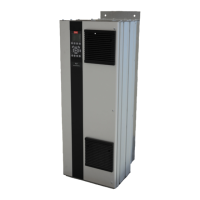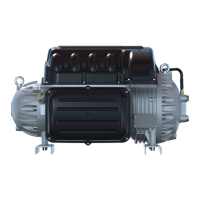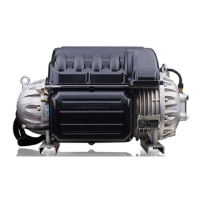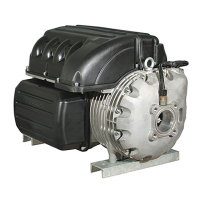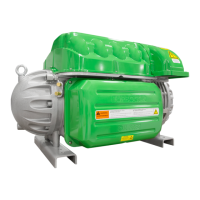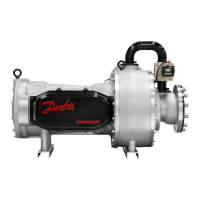Acronym/Term Definition
EMF Electromotive Force.
EMI Electromagnetic Interference.
EMI Filter A circuit or device that provides electromagnetic noise suppression for an electronic
device.
EPDM Ethylene propylene diene monomer – type of synthetic rubber.
ETL ETL Testing Laboratories, now a mark of Intertek Testing Services.
EXV Electronic Expansion Valve. Pressure-independent refrigerant metering device driven by
electrical input.
Feedthrough An insulated conductor connecting two circuits on opposite sides of a barrier such as a
compressor housing or PCB.
FLA Full Load Ampere.
Generator Mode A function of the compressor where the stator becomes a generator, creating sufficient
power to allow for the shaft to graduate slowly and drop onto the touchdown bearings
safely. This occurs when the inverter has insufficient power to sustain safe and normal
operation and is typically due to a loss of power.
Harmonics Harmonics are multiples of the fundamental frequency distortions found in electrical
power, subjected to continuous disturbances.
HFC Hydrofluorocarbon.
HFC-134a A positive-pressure, chlorine-free refrigerant having zero ozone depletion potential.
HV High Voltage.
Hz Hertz.
IEEE Institute of Electrical and Electronic Engineers (www.ieee.org).
IGV Inlet Guide Vanes. The IGV assembly is a variable-angle guiding device that pre-rotates
refrigerant flow at the compressor intake and is also used for capacity control. The IGV
assembly consists of movable vanes and a motor. The vane angle, and hence, the degree
of pre-rotation to the refrigerant flow, is determined by the BMCC and controlled by the
Serial Driver. The IGV position can vary between approximately 0-percent and 110-
percent open.
Impeller Rotating part of a centrifugal compressor that increases the pressure of refrigerant vapor
from the lower evaporator pressure to the higher condenser pressure.
Page 14 of 136 - M-AP-001-EN Rev. S 9/8/2021
